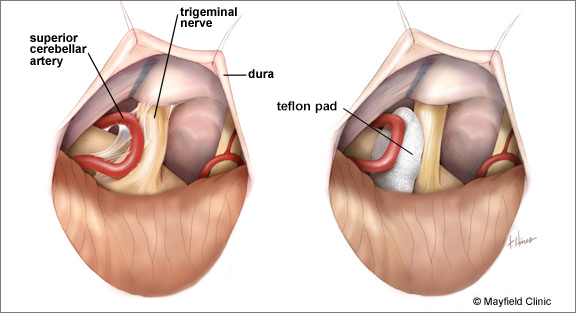Trigeminal Neuralgias
- Jan 14
- 3 min read
Updated: May 7
Dr. Prem Pillay , Singapore Brain Spine Nerves Center, Singapore
Senior Consultant Neurosurgeon with super speciality training in Neurosurgical Oncology
(Fellow at MD Anderson Cancer Center and Hospital, U of Texas, USA)
What is Trigeminal Neuralgias?
The 5th cranial nerve also known as the trigeminal nerve is the nerve that supplies feeling and movement to the face. Trigeminal neuralgia is a troublesome pain in the face that may be caused by a tumor pressing on the trigeminal nerve or a blood vessel that presses on the trigeminal nerve. In some patients the cause cannot be determined. In 5% of patients, trigeminal neuralgia may be associated with multiple sclerosis.

How is Trigeminal Neuralgia Diagnosed?
Trigeminal Neuralgia is diagnosed by the clinical symptoms of pain in the face that is quite disturbing and can be triggered by hot or cold food/drinks, brushing the teeth, air blowing on the face or touching the face. The pain can have a nerve irritation quality which includes being tingly, burning, electric zapping in nature and sometimes so severe that people have to stop their activities and sit still or lie down. It may involve the forehead, cheek or chin area. It can come and go randomly. Dr Prem Pillay usually does an MRI of the Brain to make sure there is no tumor such as a meningioma or acoustic neuroma pressing the trigeminal nerve and causing face pain. Blood vessels touching the Trigeminal Nerve can also be visualised on MRI.
Treatment of trigeminal neuralgia
Stereotactic radiosurgery
Gamma Knife
A no open surgery method that is non-invasive, effective, precise, and lower risk than surgery. It is a day treatment for most patients.
Other minimally invasive procedures
Radiofrequency electrocoagulation
Glycerol injection
Balloon compression of the Gasserian ganglion
Microvascular decompression (MVD)
A surgery where an opening is made in the skull behind the ear, and microsurgery is done to find the root cause of trigeminal nerve compression.This is usually a blood vessel, which is then elevated off the nerve and kept there using a Teflon patch.
Stereotactic surgery / Gamma Knife for trigeminal neuralgia
Stereotactic radiosurgical treatment of trigeminal neuralgia is the most recent and least invasive neurosurgical option.It is the treatment least likely to cause complications, as no surgical opening is made, avoiding the major risks of surgery such as:
Infection
Bleeding
Death
Also, the risk of facial numbness and new facial sensations (dysesthesias) is much lower than with other surgical procedures.
Suitable candidate
Any patient with trigeminal neuralgia who has:
Failed medical therapies (due to lack of pain relief or undesirable side effects)
Older patients or those with other medical conditions
Previously undergone failed surgical procedures
… is an excellent candidate for stereotactic radiosurgery / Gamma Knife.
Gamma Knife or LINAC radiosurgery?
Both the Linear Accelerator (LINAC) and the Gamma Knife are used in stereotactic radiosurgery.
The Gamma Knife is a highly precise system with good results in the hands of experienced neurosurgeons.
It is a day treatment.
How does stereotactic radiosurgery / Gamma Knife work to treat trigeminal neuralgia?
Stereotactic radiosurgery / Gamma Knife delivers a high dose of gamma rays in one session to the target lesion with scalpel-like precision, causing minimal damage to surrounding tissue.
The target is the trigeminal nerve near where it exits the brain.
A stereotactic frame or navigation box is fixed to the patient’s head.
It is a day-surgery procedure.
The patient can return to normal activities immediately after treatment.
4 stages of stereotactic radiosurgery treatment
Stage 1
A navigation box is firmly fixed to the patient’s head.This allows for precision and accuracy during treatment.
Stage 2
The patient undergoes a treatment planning MRI of the brain.
Stage 3
The neurosurgeon and team (radiation oncologist and physicist) use 3D computer imaging to:
Plan the treatment
Determine the radiation dose
The neurosurgeon is the leader of the team, as he is the brain expert.
Stage 4
The patient lies down on the treatment couch for the radiosurgery session, which is:
Painless
Non-invasive
After treatment, the navigation box is removed, and the patient usually goes home the same day.
What are the results?
Studies done in Sweden, the USA, Japan and Singapore show that good pain relief is obtained in the majority of people with Trigeminal Neuralgia.
Conclusion
Trigeminal Neuralgia is a debilitating condition that requires a tailored approach for effective management. Early diagnosis and treatment can make a significant difference in reducing pain and restoring quality of life. If you or someone you know is experiencing symptoms of trigeminal neuralgia, consult the specialists at Singapore Brain Spine Nerves Center for compassionate and comprehensive care. Let us guide you on your journey to pain relief and improved well-being.



